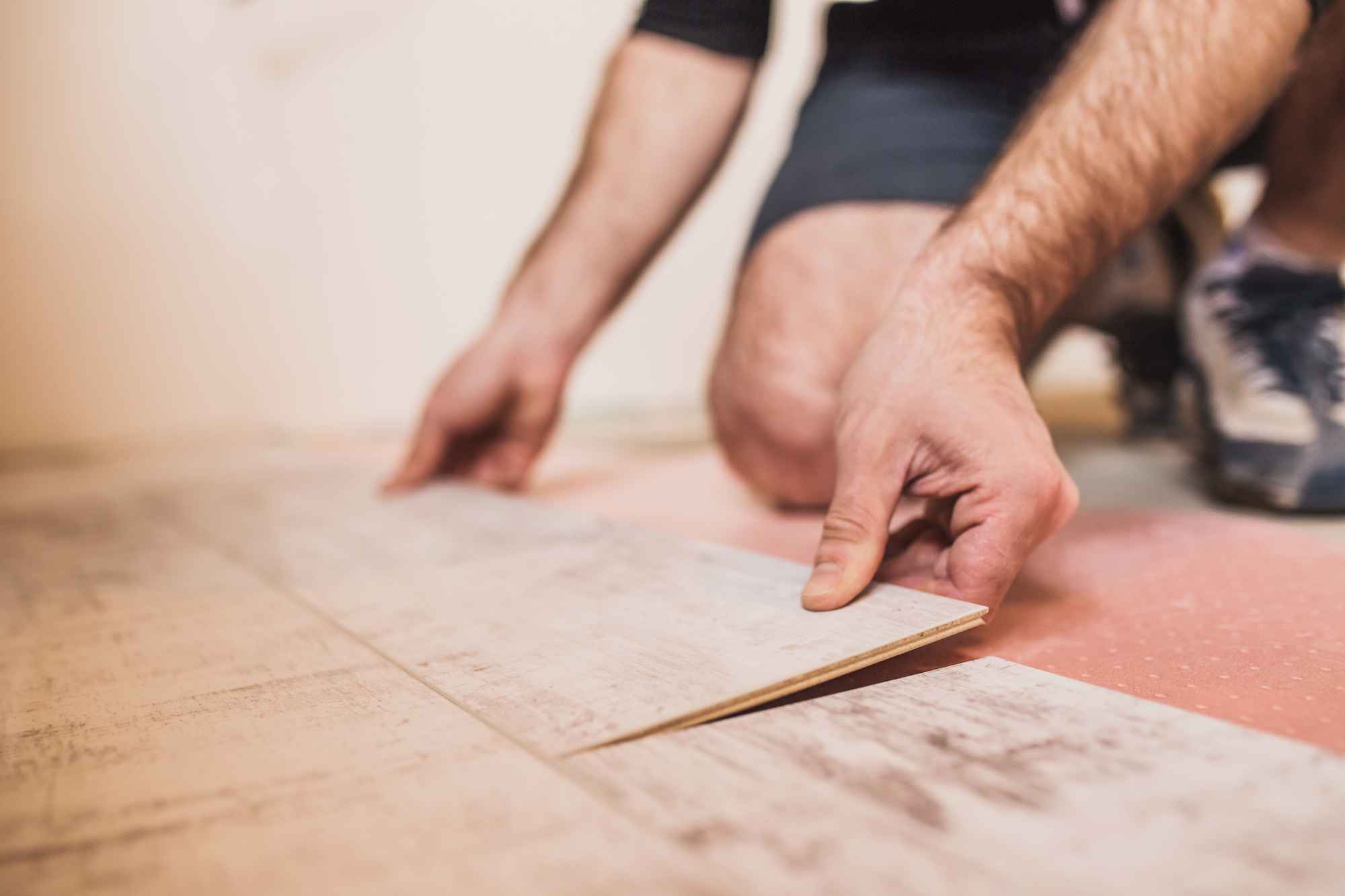Ever feel like your flooring business is stuck in neutral, even when your work speaks for itself? You’re not alone.
Plenty of flooring companies pour their heart into quality materials and expert installations, only to be overlooked by potential customers online. That’s where this flooring company local SEO guide comes in.
Local SEO isn’t just about showing up in Google—it’s about making sure your business stands out when it matters most, like when someone searches “hardwood flooring near me”.
In this guide, we’ll break down how to optimize your online presence so you’re the first name that pops up when people are ready to buy. Let’s get those leads rolling in like a freshly installed vinyl plank.
Demystifying Local SEO for Flooring Companies
What is local SEO? Simply put, it’s the digital equivalent of a well-placed showroom sign that tells local customers, “We’re right here, and we’ve got what you need.” Local SEO focuses on making your business visible to people searching for flooring services in your area, whether they need a new carpet for their living room or commercial tiles for a new office.
For flooring businesses, local SEO is a powerful way to connect with nearby customers. It starts with creating and optimizing your Google Business Profile, ensuring you show up in local search results and Google Maps when someone types “flooring store near me.” Managing reviews is another critical piece—responding to feedback (both good and bad) can build trust and show potential customers you care about quality. And don’t forget your website. Optimizing it with the right keywords, location-specific content, and fast loading times ensures your business stands out where it counts—on search engines and in the minds of customers.
Setting Up, Optimizing, and Managing Your Google Business Profile for Flooring Companies

Setting up your Google Business Profile (GBP) is one of the easiest ways to boost your local SEO efforts. The first step is to enter your real business name. Don’t try to stuff keywords here—Google’s guidelines are pretty clear on this. Your name should reflect how you are known to the public. Next, add your business address and display it publicly. If your address isn’t listed correctly or is missing, your reach will be limited, and customers will have a harder time finding you.
Once your business name and address are in place, it’s time to add your phone number, email address, and website. Make sure all this information is accurate and up to date across all platforms. After that, you’ll choose the primary category that best fits your business, typically “flooring contractor” for a flooring installation business. You’ll also need to add secondary categories, so pick the ones that make sense for the services you offer, like “flooring store,” “floor refinishing service,” or “carpet installer.” These categories help Google understand what your business does and match it with relevant searches.
Once your basics are set up, it’s time to populate your Google Business Profile with photos and videos that highlight your work. Show off your best flooring installations, whether it’s sleek hardwood floors in a modern home or durable tiles in a commercial space. Customers love seeing visual examples of your expertise, and Google rewards businesses that upload quality media.
Now, let’s talk about reviews. A strong review profile can make or break your local SEO efforts. Google Business Profiles that have regular, positive reviews tend to show up higher in local search results. Encourage happy customers to leave reviews, and be proactive about responding to both positive and negative feedback. Engaging with your customers shows that you care about their experience and helps build trust. Don’t be afraid to ask satisfied clients for reviews—just make sure it’s done in a natural way.
Also take advantage of Google’s post feature. This allows you to post updates, offers, and events directly to your profile, providing an opportunity to keep customers engaged and informed. It’s also an easy way to boost your visibility when a potential customer is checking out your profile.
By carefully setting up, optimizing, and maintaining your Google Business Profile, you’ll create a strong foundation for your local SEO strategy.
The Power of Positive Reviews for Your Google Business Profile
Positive reviews are essential for the success of your Google Business Profile. Flooring companies with a solid review profile tend to appear higher in search results and attract more customers. Respond to all reviews—both positive and negative. This shows potential customers that you care about customer satisfaction and helps build trust. Encourage your former clients to leave reviews, whether it’s through a quick follow-up email or by providing a simple link with their receipt. The more authentic, positive feedback you have, the better your profile will perform.
Keyword Research for Local Flooring Installation Providers
When doing local keyword research for your flooring business, the first step is selecting a keyword research tool that fits your budget. If your company is still in its early stages, affordable tools like Keysearch or Keyword Chef can give you great insights without breaking the bank. If you have the budget for it, more robust tools like Ahrefs or SEMRush offer in-depth data, but keep in mind they come with a higher price tag and a lot of functionality that you may not need just yet.
Start your research with simple seed keywords like “flooring + location” (for example, “flooring Kansas City” or “hardwood flooring St. Louis”). These basic phrases are often the most searched and can help drive traffic to your location pages. Once you have your seed keywords, use your tool to uncover secondary keywords related to your services, such as “flooring installation near me” or “best carpet installers in [your city].” These secondary keywords are valuable for optimizing your content, helping you target a range of relevant search terms that local customers are likely to use when looking for flooring services. Sprinkle them throughout your website and other content to improve your visibility and attract the right customers.
Creating a Local SEO-Friendly Website Structure for Flooring Businesses
When building a website for your flooring business, it’s important to structure it in a way that’s optimized for local SEO. Start by selecting a primary keyword for each page and target that keyword specifically. For example, if you’re focusing on “flooring company Kansas City,” you’d design your homepage to target that exact term. Once you’ve nailed down your primary keyword, the next step is to create location-specific pages that focus on the services you offer in surrounding cities. These pages should each have their own unique target keywords like “flooring installation in Overland Park”, allowing you to rank for a wider range of local searches.
While there are different ways to structure your site, one thing is clear: avoid targeting the same primary keyword on multiple pages. When you do this, your pages end up competing against each other, which can hurt your rankings rather than help them. Instead, focus each page on a specific keyword or topic to ensure that your pages complement each other and increase your visibility across multiple areas. This strategy helps you attract more targeted traffic from local customers without confusing search engines about which page should rank for what.
Strengthening Your Flooring Services Website with Effective On-Page SEO Techniques
On-page SEO is all about making sure your website content is optimized to rank well for the keywords you target. As mentioned earlier, the first step is to choose a primary keyword or topic for each page. Once you’ve picked your keyword, you’ll want to incorporate synonyms and related terms naturally throughout the page content. For example, if your primary keyword is “flooring company Kansas City,” you might also use terms like “hardwood floors,” “tile installation,” or “carpet” within the copy. This helps Google understand the context of your page and indicates that you’ve covered the topic thoroughly.
To ensure your page is fully optimized, you should include your primary keyword in key areas: the title tag, meta description, and H2 headings. Additionally, aim to use your keyword naturally in the page copy a few times—but don’t overdo it, as this can hurt readability.
But it’s not just about the primary keyword. Local SEO professionals often talk about entity optimization, which refers to related terms that aren’t traditionally considered keywords but are still important for ranking. For instance, pages ranking for “flooring in Kansas City” will likely contain words like “hardwood,” “carpet,” or “installation.” You may already be using these terms organically in your content, but tools like SurferSEO or Frase.io can help identify additional related entities. These tools analyze your target keywords and show you which related terms are ranking, allowing you to include them at the right frequency for optimal SEO impact.
Building Citations and Backlinks for Your Flooring Company Website
Citations are an important, though not as powerful as they once were, part of your local SEO strategy. These are mentions of your business name, address, and phone number (NAP) across local business directories like Yelp, Yellow Pages, and others. While citations don’t have as significant an impact on rankings today, Google still sees them as a sign that your flooring business is legitimate and active in the local market. You can manually build citations or use tools like BrightLocal to make the process more efficient. Having accurate and consistent citations across trusted sites helps improve your local visibility and adds a layer of credibility to your SEO efforts.
On the other hand, backlinks play a much larger role in improving your rankings on Google and other search engines like Bing. Backlinks are essentially votes of confidence from other websites—when they link to your site, search engines view this as an endorsement of your content’s quality and relevance. Building high-quality backlinks can be challenging, but it’s one of the most effective ways to improve your site’s authority. Focus on acquiring backlinks from reputable sources, such as local newspapers or respected flooring and contracting industry publications. You can build backlinks by using strategies like guest posting, creating “linkable” assets (like flooring industry statistics pages or resourceful guides that naturally attract links), and leveraging digital PR campaigns. Though building these backlinks takes time and effort, they’re worth the investment for boosting your SEO and increasing your site’s traffic.
Why Mobile Optimization Matters for Your Flooring Business Website
In today’s digital world, having a mobile-friendly website is essential for flooring businesses. A large portion of website traffic comes from mobile devices, so if your site isn’t optimized for mobile, you’re likely losing potential customers. Mobile optimization ensures that visitors can easily navigate your site, find what they need, and contact you, regardless of the device they’re using. This not only improves user experience but also boosts your rankings on search engines like Google, which prioritize mobile-friendly sites in their results.
Creating a Winning Local SEO Strategy for Your Flooring Business
Implementing a consistent local SEO strategy is key to boosting your flooring business’s online presence and attracting more customers. By focusing on optimizing your website, managing your Google Business Profile, gathering reviews, and building high-quality backlinks, you’ll strengthen your search engine rankings and increase your visibility in local search results. The key is staying consistent and always looking for opportunities to refine and improve your strategy.
At Galactic Turtle, we work with local businesses to grow their online presence and generate more leads with our local SEO services for flooring companies.
If you’re ready to elevate your SEO game and attract more customers, our expert team is here to help you every step of the way. Contact us today.
Sources
- https://www.grandviewresearch.com/industry-analysis/flooring-market-analysis
- https://www.freedoniagroup.com/industry-study/flooring
- https://www.polarismarketresearch.com/industry-analysis/flooring-market
- https://www.futuremarketinsights.com/reports/eco-flooring-market
- https://www.principiaconsulting.com/2024/04/11/what-is-driving-residential-flooring-demand-through-2026/
- https://www.uniquewoodfloor.com/blog/adapting-to-change-navigating-the-2023-flooring-industry-trends-and-market-dynamics
- https://data.census.gov/table/ACSDP1Y2022.DP04?q=DP04
- https://www.bls.gov/ooh/construction-and-extraction/tile-and-marble-setters.htm
- https://www.homedepot.com/c/ab/types-of-flooring/9ba683603be9fa5395fab903a8a5e90


